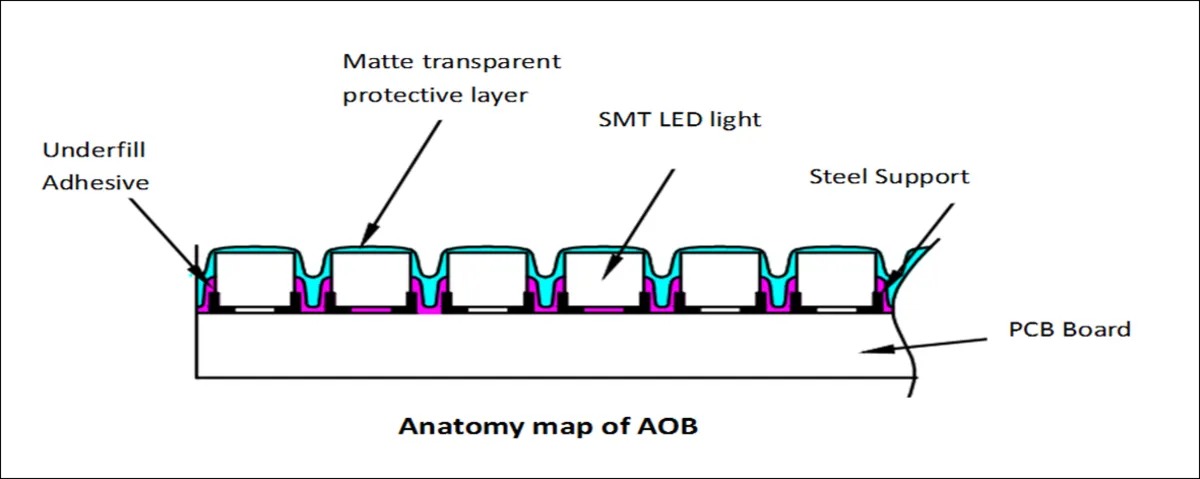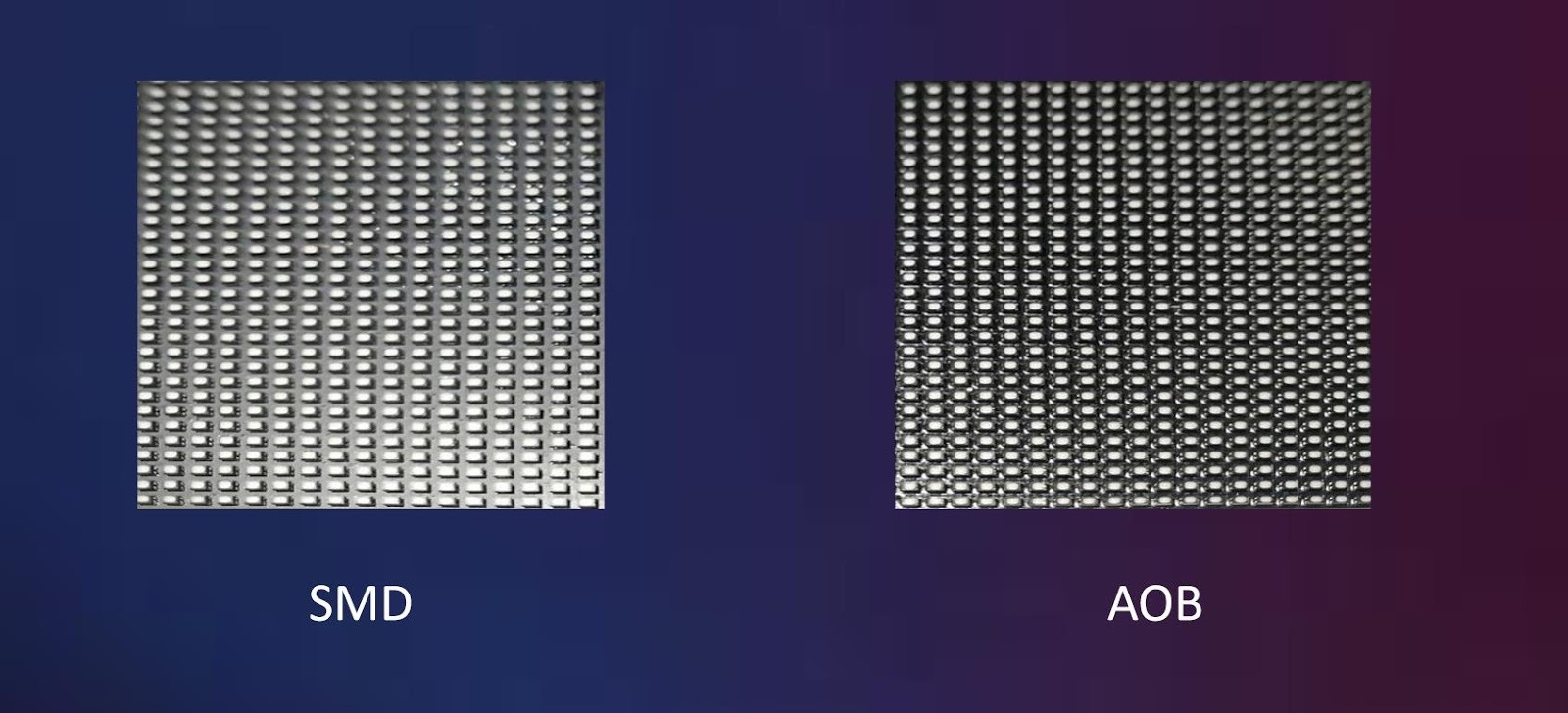1. Introduction
Standard LED display panel have weak protection against moisture, water, and dust, often encountering the following issues:
Ⅰ. In humid environments, large batches of dead pixels, broken lights, and “caterpillar” phenomena frequently occur;
Ⅱ. During long-term use, air conditioning vapor and splashing water can erode LED lamp beads;
Ⅲ. Dust accumulation inside the screen leads to poor heat dissipation and accelerated screen aging.
For general indoor LED display, LED panels is usually delivered in a zero-fault state at the factory. However, after a period of use, issues such as broken lights and line brightness often occur, and unintentional collisions can cause lamp drops. At installation sites, unforeseen or suboptimal environments can sometimes be encountered, such as large-scale faults caused by temperature differences from air conditioning outlets blowing directly at close range, or high humidity causing an increase in screen fault rates.
For the indoor fine pitch LED display supplier with semi-annual inspections, addressing issues such as moisture, dust, collision, and fault rates, and improving product quality while reducing after-sales service burden and costs are critical concerns for LED display suppliers.

Figure 1. Bad short-circuit and column lighting phenomenon of LED display
2. RTLED’s AOB Coating Solution
To effectively address these issues, RTLED introduces the AOB (Advanced Optical Bonding) coating solution. AOB coating technology screens isolate LED tubes from external chemical contact, preventing moisture and dust intrusion, significantly enhancing the protective performance of our LED screens.
This solution is based on the current indoor surface-mounted LED display production process, integrating seamlessly with existing SMT (Surface Mount Technology) production lines.

Figure 2. Schematic diagram of surface coating equipment (light surface)
The specific process is as follows: after the LED boards are made using SMT technology and aged for 72 hours, a coating is applied to the board surface, forming a protective layer that encases conductive pins, insulating them from moisture and vapor effects, as shown in Figure 3.
For general LED display products with a protection level of IP40 (IPXX, the first X indicates dust protection, and the second X indicates water protection), AOB coating technology effectively enhances the protection level of the LED surface, provides collision protection, prevents lamp drops, and reduces the overall screen fault rate (PPM). This solution has met market demand, matured in production, and does not excessively increase overall cost.

Figure 3. Schematic diagram of the process of surface coating
Additionally, the protective process on the back of the PCB (Printed Circuit Board) maintains the previous three-proof paint protection method, improving the protection level on the back of the circuit board through a spraying process. A protective layer is formed on the integrated circuit (IC) surface, preventing the failure of integrated circuit components in the drive circuit.
3. Analysis of AOB Features
3.1 Physical Protective Properties
AOB’s physical protective properties rely on the underlying filling coating, which has bonding characteristics similar to solder paste but is an insulating material. This filling adhesive wraps the entire bottom of the LED, increasing the contact capability between the LED and the PCB. Laboratory tests show that the conventional SMT solder side-push strength is 1kg, while the AOB solution achieves a side-push strength of 4kg, solving collision problems during installation and avoiding pad detachment that causes lamp boards to be unrepairable.
3.2 Chemical Protective Properties
AOB’s chemical protective properties involve a matte transparent protective layer that encapsulates the LED using a high-polymer material applied through nanocoating technology. This layer’s hardness is 5~6H on the Mohs scale, effectively blocking moisture and dust, ensuring the lamp beads are not adversely affected by the environment during use.
3.3 New Discoveries Under Protective Properties
3.3.1 Increased Viewing Angle
The matte transparent protective layer acts as a lens on the front of the LED, increasing the light emission angle of the LED lamp beads. Tests show that the light emission angle can be increased from 140° to 170°.
3.3.2 Improved Light Mixing
SMD surface-mounted devices are point light sources, which are more granular compared to surface light sources. AOB coating adds a layer of transparent glass on SMD LEDs, reducing granularity through reflection and refraction, alleviating moiré effects, and enhancing light mixing.
3.3.3 Consistent Black Screen
Inconsistent PCB board ink colors have always been a problem for SMD displays. AOB coating technology can control the thickness and color of the coating layer, effectively solving the issue of inconsistent PCB ink colors without losing viewing angles, perfectly addressing the issue of using different batches of PCB boards together, and improving shipment efficiency.
3.3.4 Increased Contrast
Nanocoating allows for precise control, with controllable material composition, increasing the blackness of the screen base color and improving contrast.

4. Conclusion
AOB coating technology encapsulates exposed electrical conductive pins, effectively preventing faults caused by moisture and dust, while providing collision protection. With the isolation protection of AOB nanocoating, LED fault rates can be reduced to below 5PPM, significantly improving the screen’s yield and reliability.
Built on the SMD LED display foundation, the AOB process inherits the advantages of easy single-lamp maintenance of SMD, while fully optimizing and upgrading the user’s usage effects and reliability in terms of moisture, dust, protection level, and dead light rate. The emergence of AOB provides a premium choice for indoor display solutions and is a significant milestone in the evolution of LED display technology.
RTLED’s new triple-proof indoor small pitch LED display – waterproof, dustproof and bump-proof – AOB Display. Contact us now to get formal quota.
Post time: Jul-24-2024

